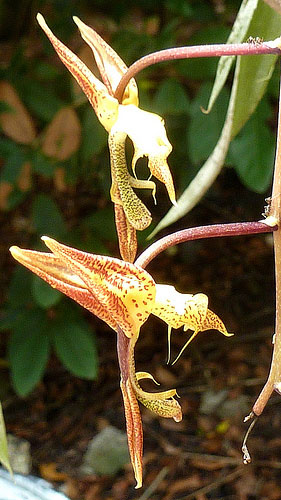Gongora
The Gongora orchid genus, named in 1794 by Ruiz and Pavon in honor of viceroy Antonio Caballero y Gongora of New Granada, is a group of 65 orchid species in the Stanhopeinae subtribe (see Stanhopea for more.) They have long, pendulous inflorescences that hang over the edge of the pot; many people hang the pots, or grow them in hanging baskets. The flowers point downwards, and are often attractively spaced along the flower stem. There are several to dozens of flowers per stem, and each growth can produce multiple flower stems. They are fragrant orchids, commonly smelling of cinnamon, allspice, or nutmeg. They have enough fragrance that they will often fill a greenhouse with their perfume. The scent is actually an important part of their reproductive strategy, as it attracts male euglossine bees that need to collect it to attract females.
Gng. meneziana
Image courtesy of Alex Popovkin, Bahia, Brazil
Distributed under the Creative Commons Attribution 2.0 Generic license.